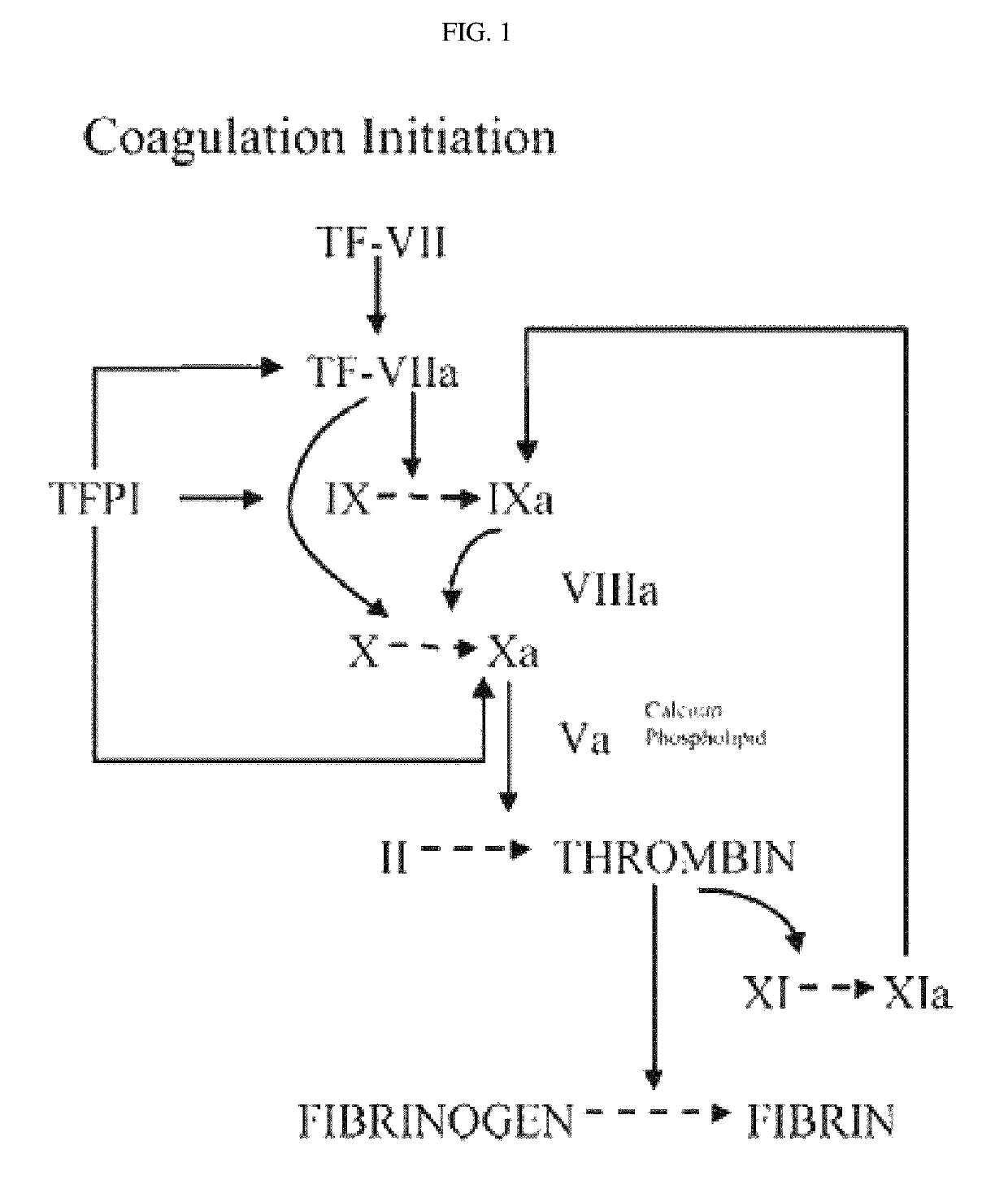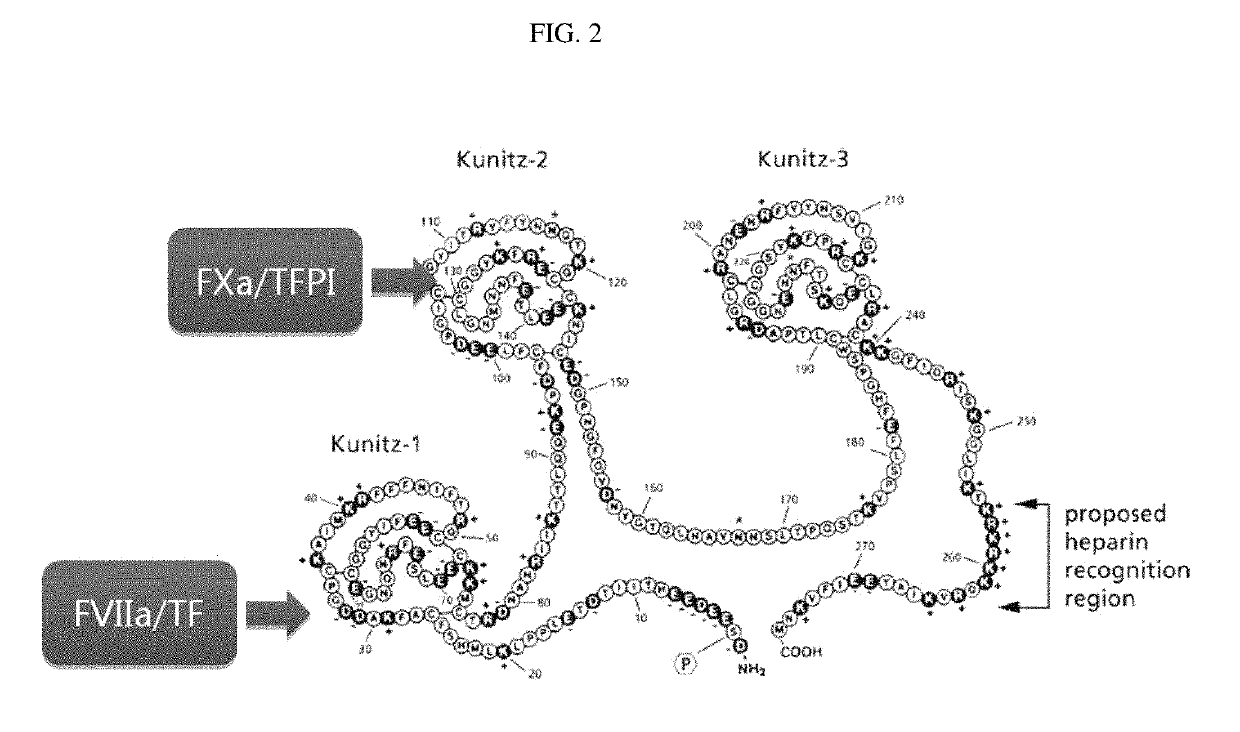Antibody binding to TFPI and composition comprising the same
a technology of antibody and tfpi, which is applied in the field of antibody, can solve the problems of inconvenience and constant presentation of recombinant proteins, and achieve the effect of improving the stability and stability of recombinant proteins
- Summary
- Abstract
- Description
- Claims
- Application Information
AI Technical Summary
Benefits of technology
Problems solved by technology
Method used
Image
Examples
example 1
on of Anti-TFPI Antibody
[0103]As an antibody against TFPI (tissue factor pathway inhibitor) that inhibits the factor X activity, an antibody for treating or preventing hemophilia, which can prevent the inhibition of blood coagulation, was prepared.
[0104]1-1: Selection of Antibody
[0105]Mice were immunized with recombinant human TFPI, and the spleens were extracted from the mice. B lymphocytes were extracted from the spleens, total RNA was isolated therefrom, and then synthesized into cDNA. From the synthesized cDNA, various mouse antibody genes were cloned by PCR (polymerase chain reaction), and inserted into pComb3X phagemids, thereby constructing an antibody library displaying antibody fragments having various sequences. In order to select a human TFPI-specific antibody from the antibody library, TFPI-immobilized magnetic beads and the antibody library were mixed with each other, and clones binding to the target antigen were separated and cultured. Then, clones (T417 or T308 clone ...
example 2
ion of Humanized Antibody by CDR-Grafting to Stable Framework
[0117]When the quantitative binding affinities of the TFPI antigen (full-length human TFPI protein) (Cat.No.TFPI-875H; Creative Biomart, USA) for the T417 and T308 clone antibodies were evaluated, the clone T417 antibody showed the best effect (see FIG. 8 and Example 6). Thus, humanization of clone T417 was performed in order to clone 308.
[0118]In order to humanize the mouse-derived clone T417 antibody, CDR-grafting that is most widely used for humanization was selected. Specifically, the structure of clone T417 was predicted through a sample showing the highest QMEAN, GMQE and homology values among 50 samples obtained from Swiss-Model (http: / / swissmodel.expasy.org / ) that is a structure prediction site, and the CDRs binding to the antigen and a framework other than the CDRs were identified using the Kabat and Chothia numbering scheme. Then, a human framework having the highest homology was searched using IgBLAST (http: / / ww...
example 3
Clone 308 Antibody Mutant by in Silico Modeling
[0123]The binding between clone 308 constructed in Example 2 and TFPI KPI-2 (Kunitz domain 2) was predicted by in silico modeling, and a position that can improve the binding to the antigen was predicted (Heavy chain-52a, -64 and light chain 27d) (see FIG. 5 and Table 6 below).
[0124]Using homology modeling that is the BioLuminate module (Schrodinger, USA), the structure of the clone 308 antibody that binds to TFPI was produced. To produce the structure, a template search was performed through the PDB database using the sequence of clone 308. As a result, a 3QOS (PDB number) structure having a similar structure and a high composite score was selected. It could be seen that 3QOS and clone 308 are similar in sequences other than the HV CDR H3 region having an antigen-specific structure and are templates suitable for producing the structure. A total of clone 308 models were produced and compared with the structure of 3QOS, and the most simi...
PUM
 Login to View More
Login to View More Abstract
Description
Claims
Application Information
 Login to View More
Login to View More - R&D
- Intellectual Property
- Life Sciences
- Materials
- Tech Scout
- Unparalleled Data Quality
- Higher Quality Content
- 60% Fewer Hallucinations
Browse by: Latest US Patents, China's latest patents, Technical Efficacy Thesaurus, Application Domain, Technology Topic, Popular Technical Reports.
© 2025 PatSnap. All rights reserved.Legal|Privacy policy|Modern Slavery Act Transparency Statement|Sitemap|About US| Contact US: help@patsnap.com



